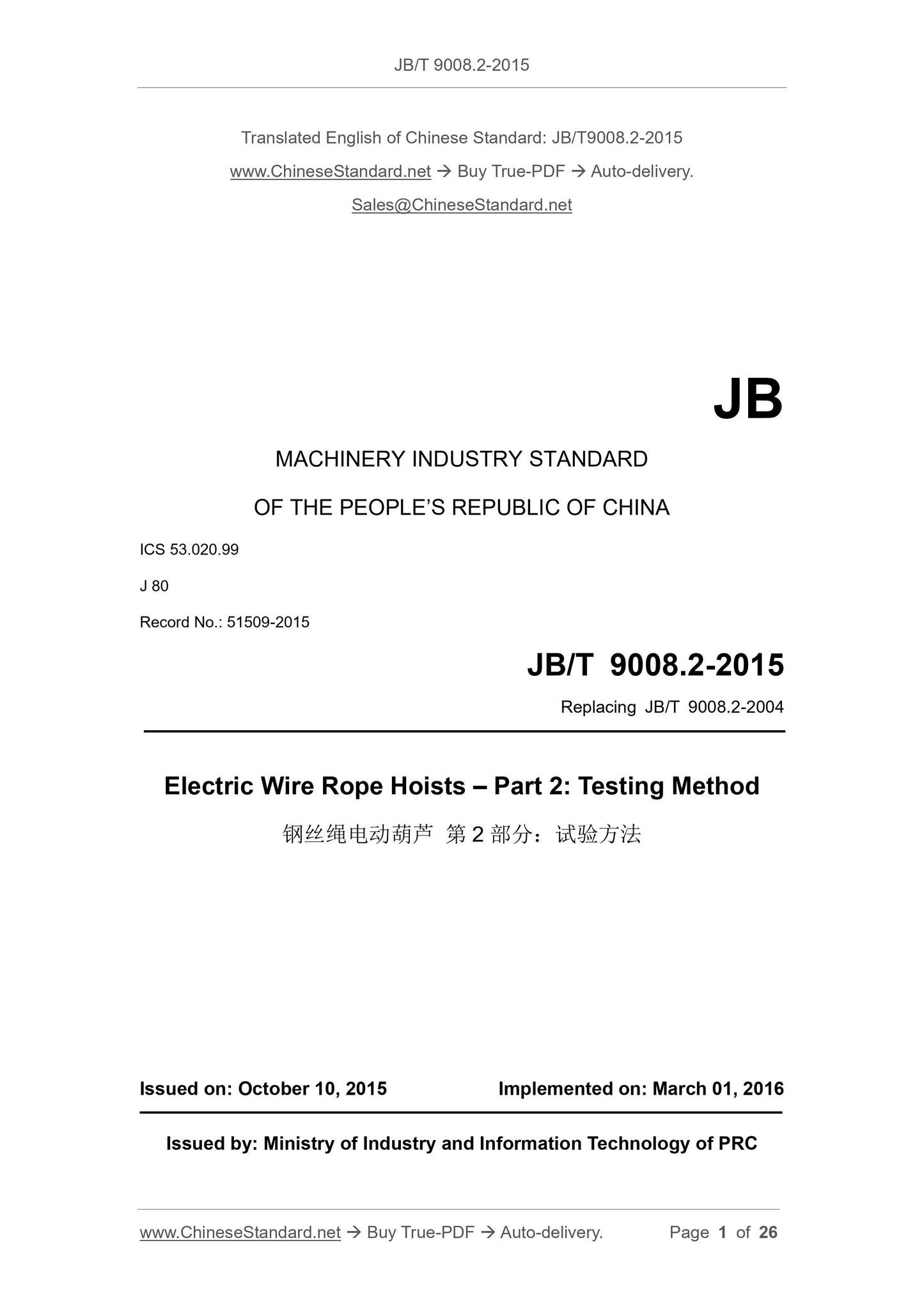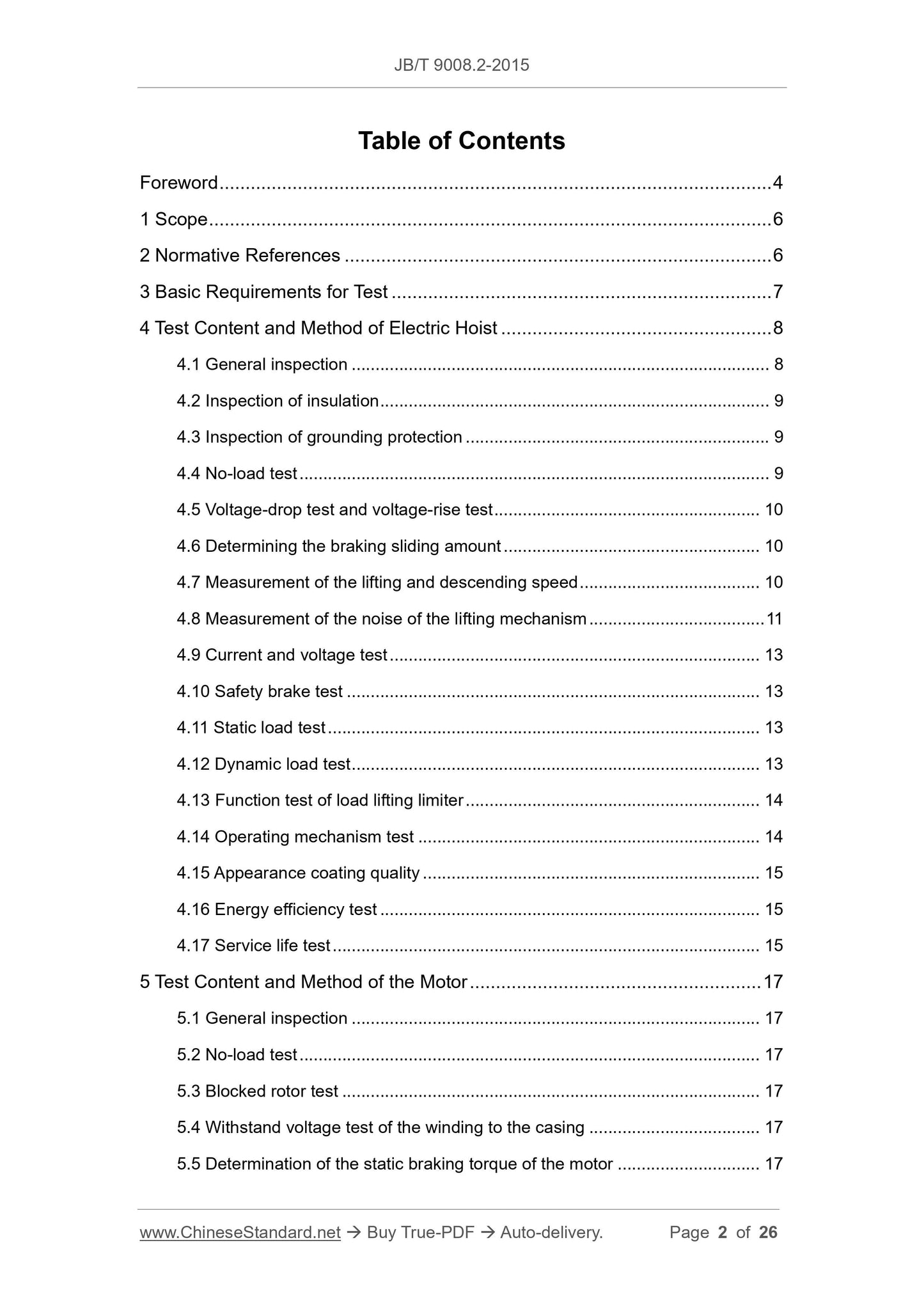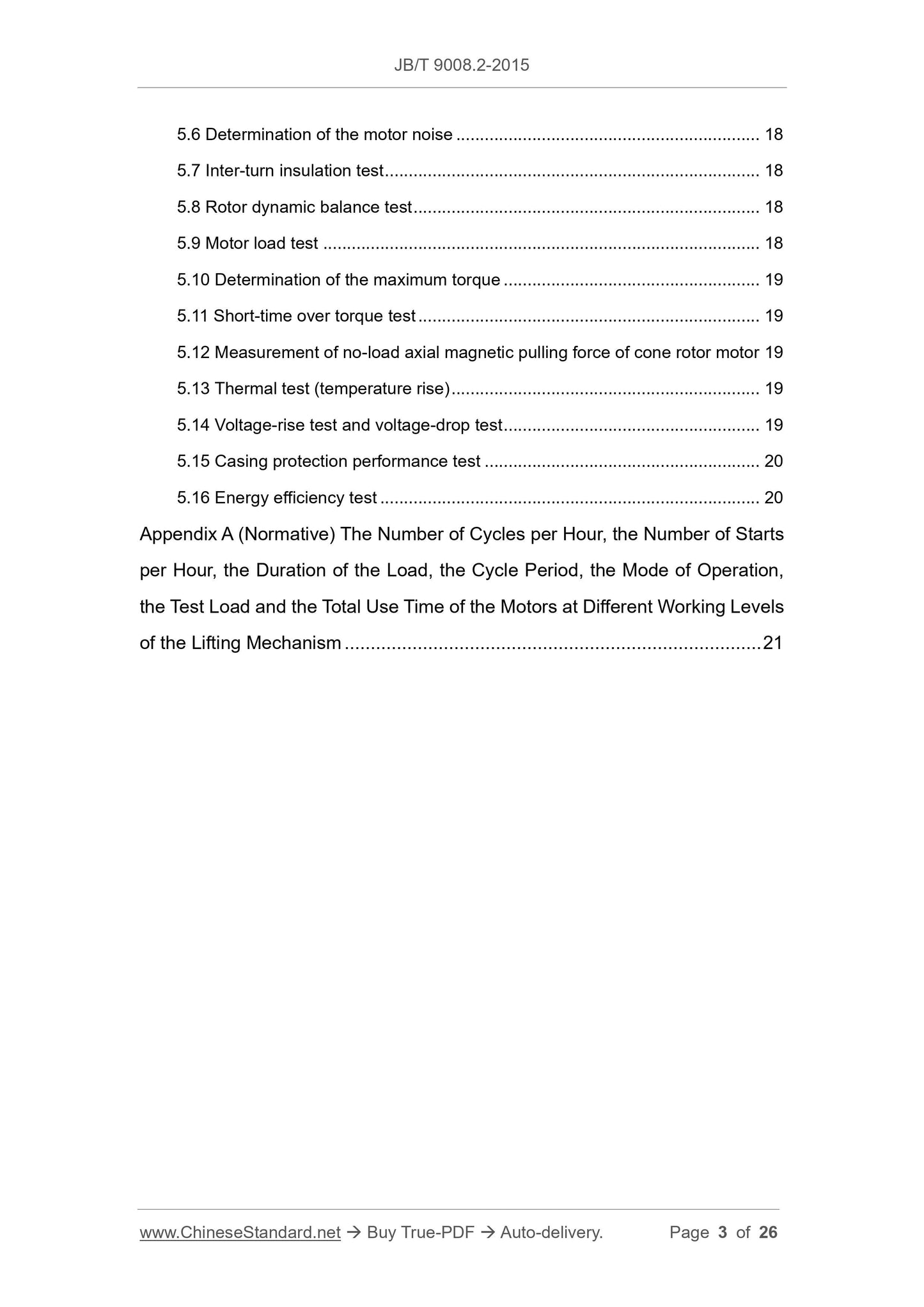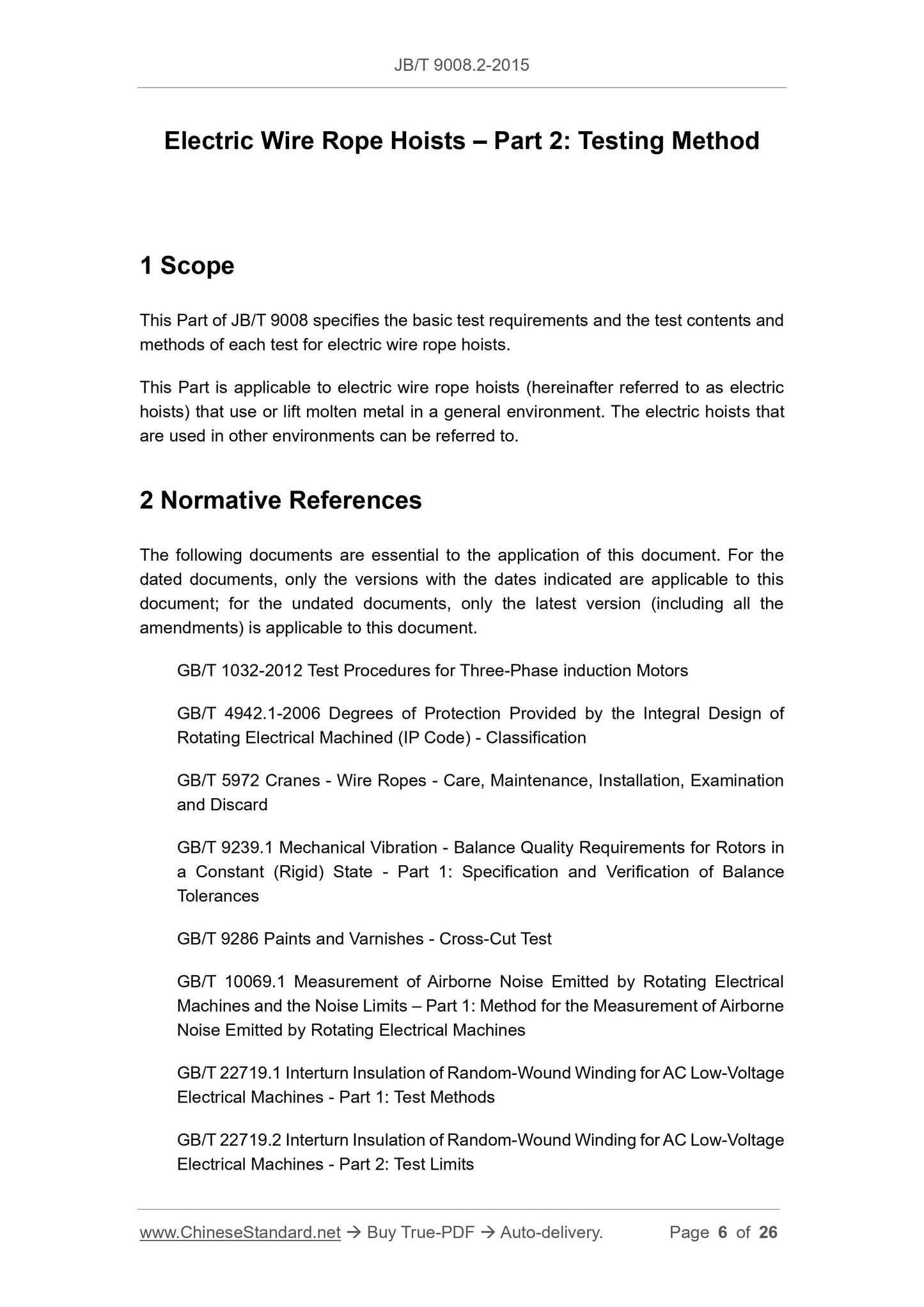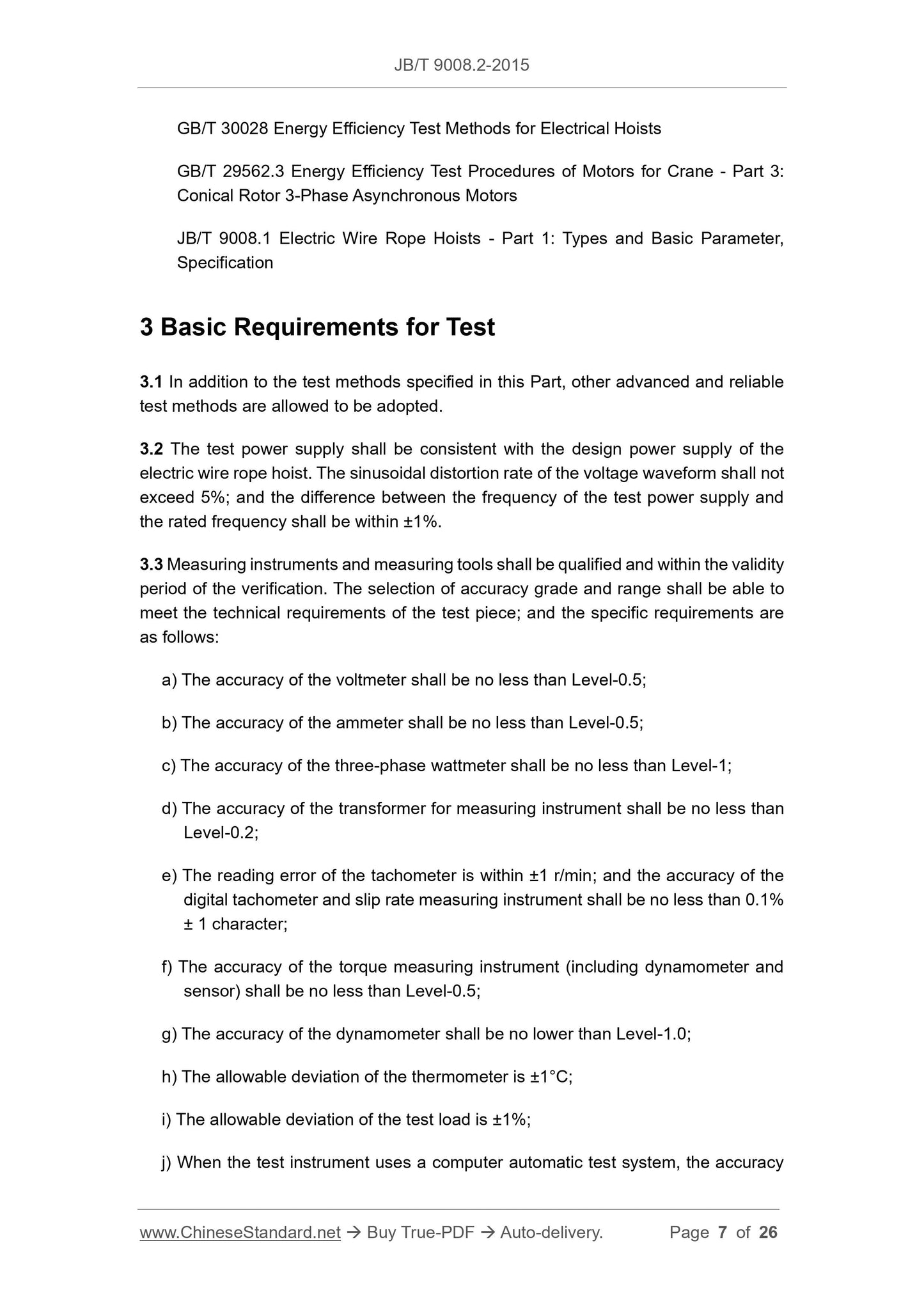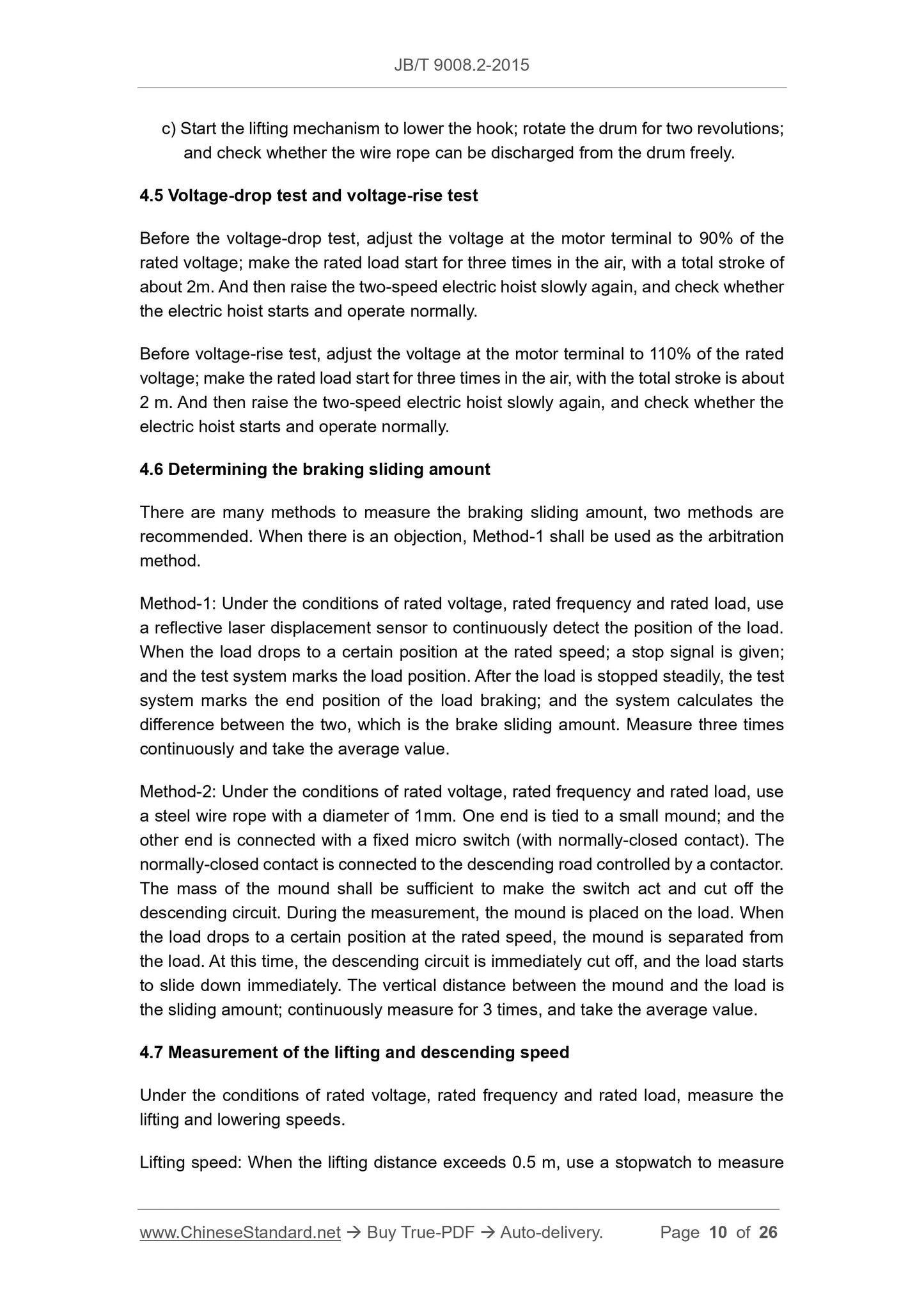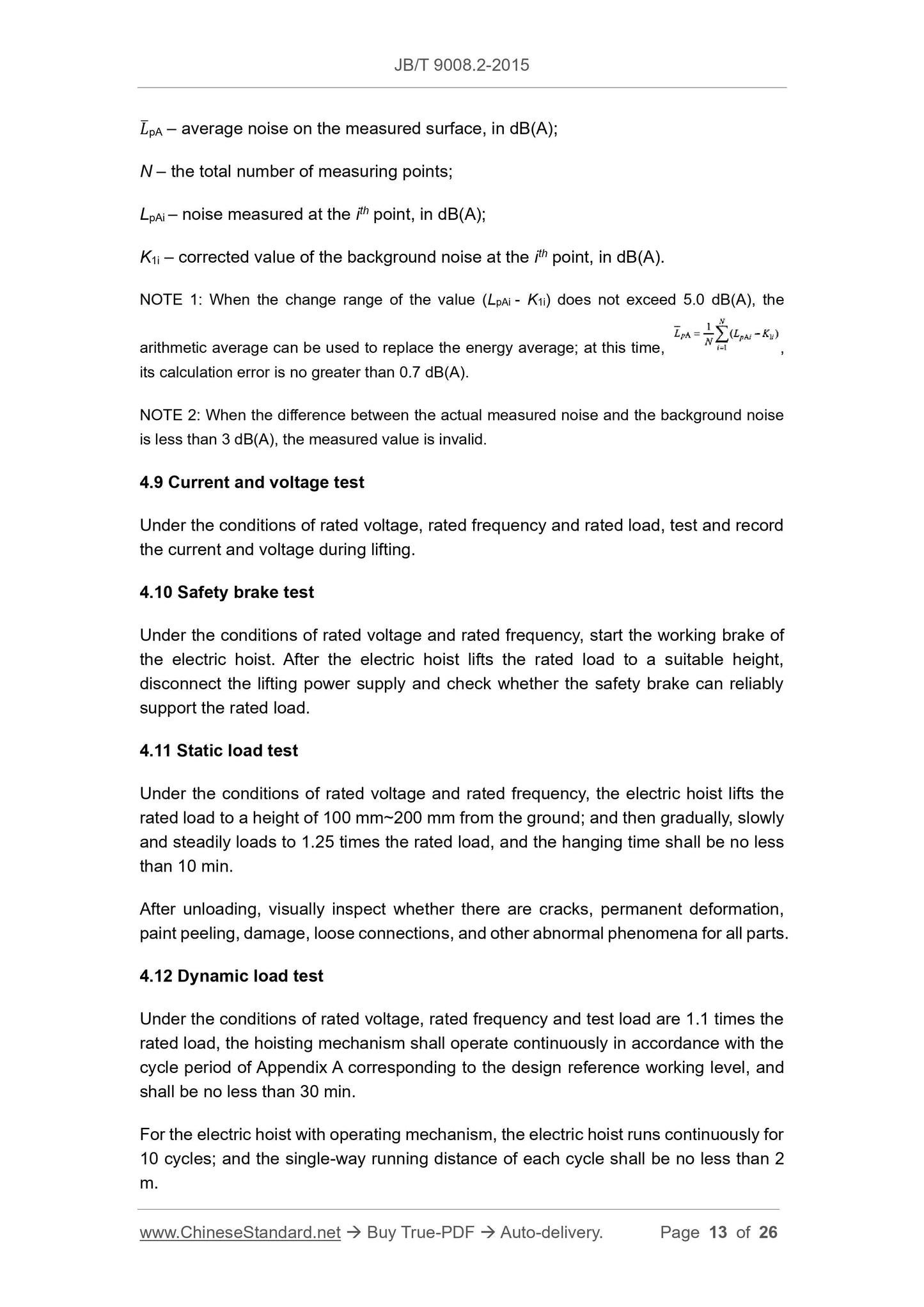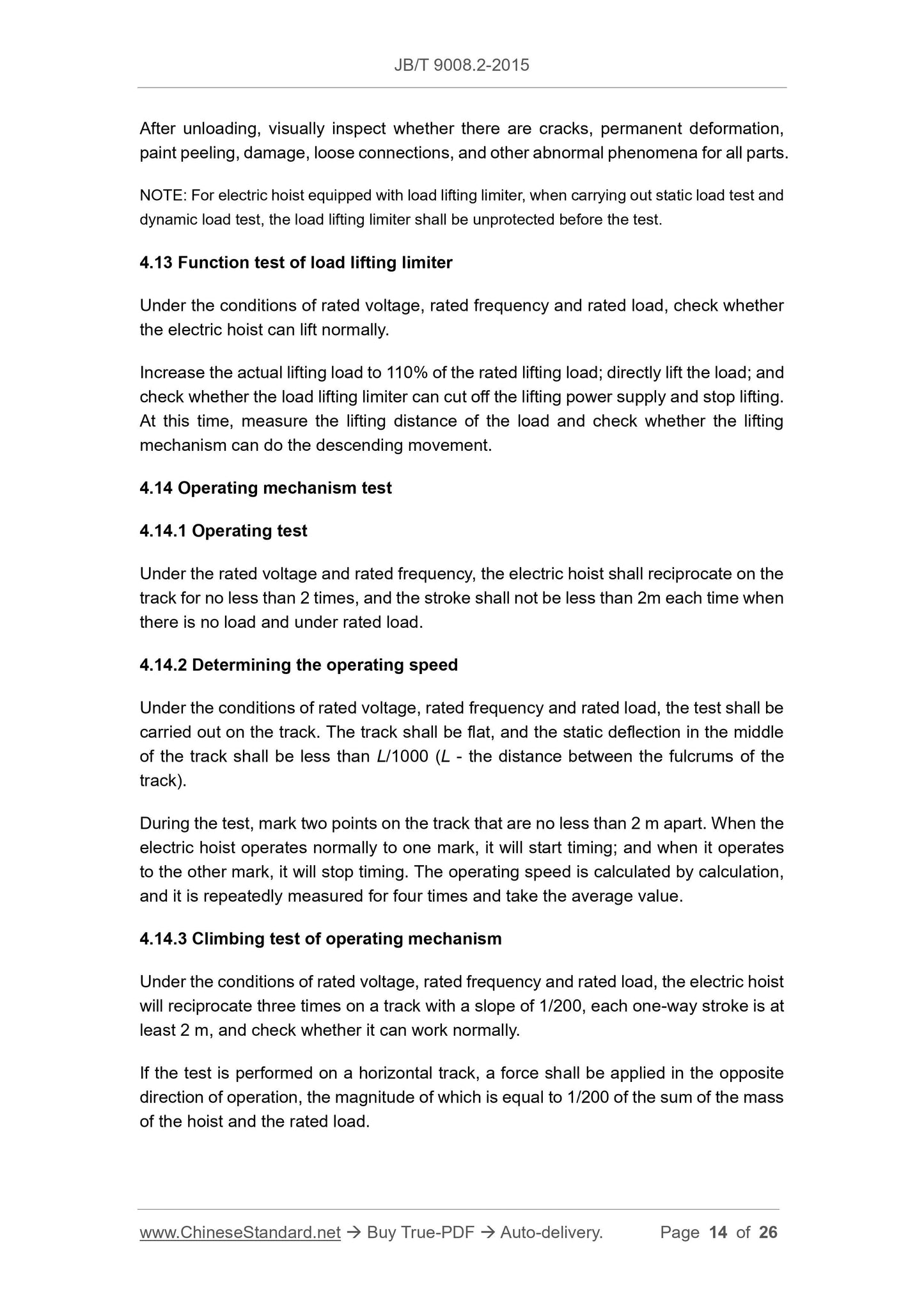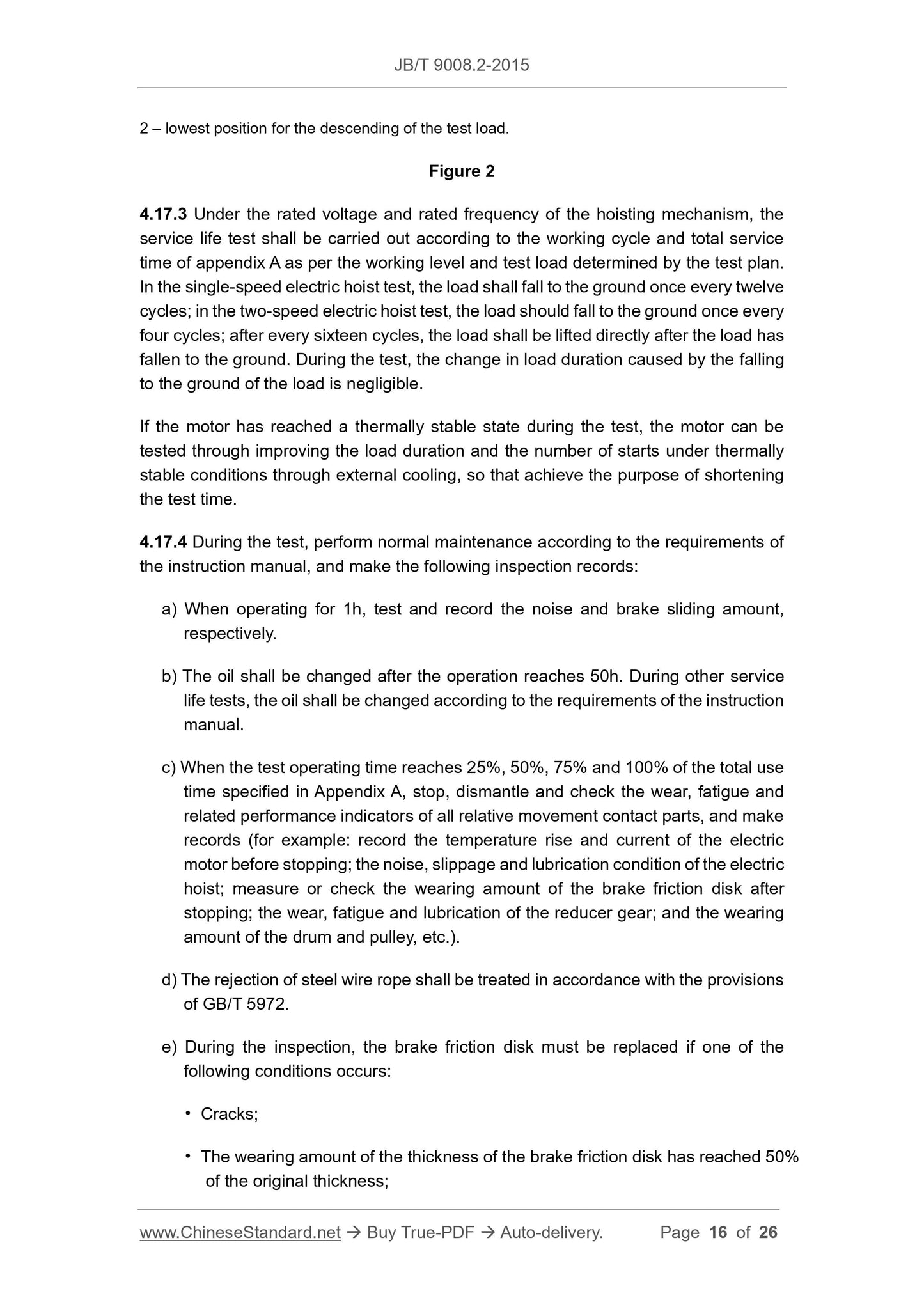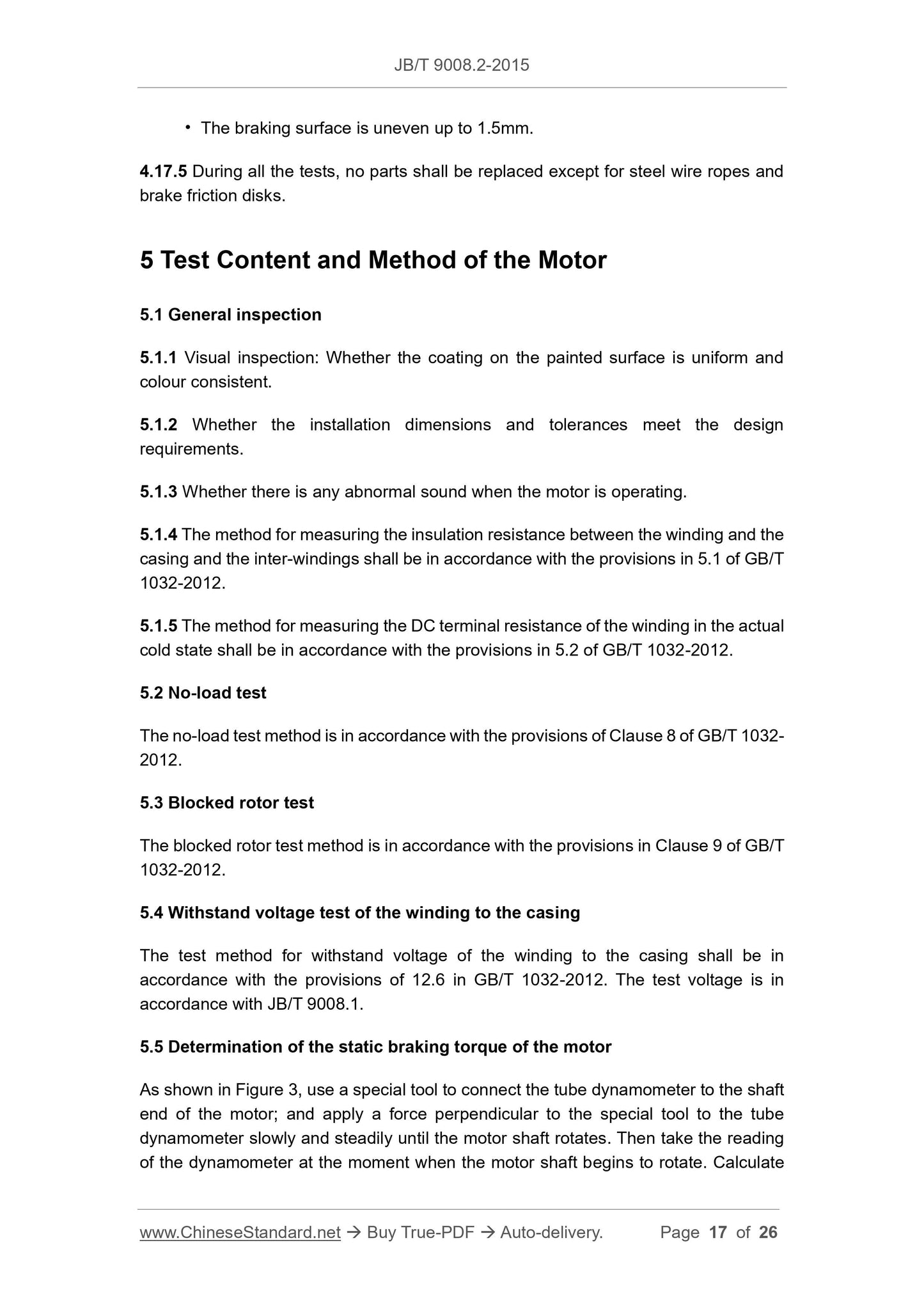1
/
of
10
www.ChineseStandard.us -- Field Test Asia Pte. Ltd.
JB/T 9008.2-2015 English PDF (JB/T9008.2-2015)
JB/T 9008.2-2015 English PDF (JB/T9008.2-2015)
Regular price
$290.00
Regular price
Sale price
$290.00
Unit price
/
per
Shipping calculated at checkout.
Couldn't load pickup availability
JB/T 9008.2-2015: Electric wire rope hoists - Part 2: Testing method
Delivery: 9 seconds. Download (and Email) true-PDF + Invoice.Get Quotation: Click JB/T 9008.2-2015 (Self-service in 1-minute)
Newer / historical versions: JB/T 9008.2-2015
Preview True-PDF
Scope
This Part of JB/T 9008 specifies the basic test requirements and the test contents andmethods of each test for electric wire rope hoists.
This Part is applicable to electric wire rope hoists (hereinafter referred to as electric
hoists) that use or lift molten metal in a general environment. The electric hoists that
are used in other environments can be referred to.
Basic Data
| Standard ID | JB/T 9008.2-2015 (JB/T9008.2-2015) |
| Description (Translated English) | Electric wire rope hoists - Part 2: Testing method |
| Sector / Industry | Mechanical and Machinery Industry Standard (Recommended) |
| Classification of Chinese Standard | J80 |
| Classification of International Standard | 53.020.99 |
| Word Count Estimation | 15,160 |
| Date of Issue | 2015-10-10 |
| Date of Implementation | 2016-03-01 |
| Older Standard (superseded by this standard) | JB/T 9008.2-2004 |
| Quoted Standard | GB/T 1032-2012; GB/T 4942.1-2006; GB/T 5972; GB/T 9239.1; GB/T 9286; GB/T 10069.1; GB/T 22719.1; GB/T 22719.2; GB/T 30028; GB/T 29562.3; JB/T 9008.1 |
| Regulation (derived from) | PRC MIIT Announcement 2015 No.63 |
| Issuing agency(ies) | Ministry of Industry and Information Technology |
| Summary | This standard specifies the wire rope electric hoist basic test requirements and the test content and methods of testing. This standard applies to the general environment in the use or lifting of the wire rope hoist electric hoist (hereinafter referred to as electric hoist). Other environment in the use of electric hoist can refer to the use. |
Share
